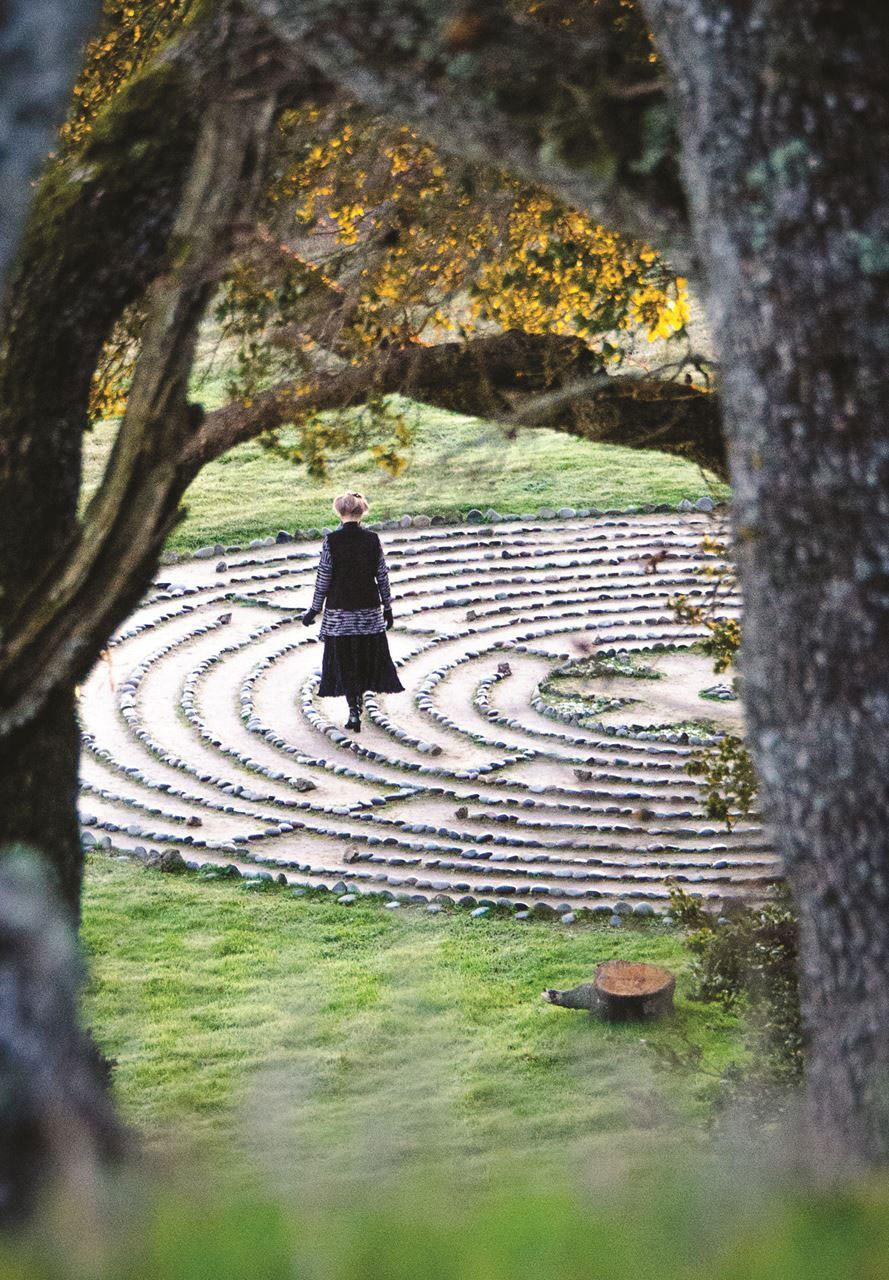
New to the Labyrinth? |
What is a labyrinth?The labyrinth is a walking meditation, a path of prayer and an archetypal blueprint where psyche meets Spirit. It has only one path that leads from the outer edge in a circuitous way to the center.There are no tricks to it and no dead ends. Unlike a maze where you lose your way, the labyrinth is a spiritual tool that can help you find your way. | What are the benefits of walking the labyrinth?Walking the Labyrinth quiets the mind, opens the heart and grounds the body ... Some find answers to questions long asked, some find healing, creativity, a sense of wholeness ... What will you find on your labyrinth journey? |
Guidelines for Walking the LabyrinthThe labyrinth is not a maze. There are no tricks to it and no dead ends. It has a single circuitous path that winds its way into the center. The person walking it uses the same path to return from the center and the entrance then becomes the exit. The path is in full view, which allows a person to be quiet and focus internally. Generally there are three stages to the walk: releasing on the way in, receiving in the center and returning when you follow the return path back out of the labyrinth. Symbolically, and sometimes actually, you are taking back out into the world that which you have received. There is no right way or wrong way to walk a labyrinth. Use the labyrinth in any way that meets what you need while being respectful of others walking. You may go directly to the center to sit quietly -- whatever meets your needs. To prepare, you may want to sit quietly to reflect before walking the labyrinth. Some people come with questions, others just to slow down and take time out from a busy life. Some come to find strength to take the next step. Many come during times of grief and loss. Children enjoy the labyrinth and we ask that parents supervise their youngchildren so all may enjoy the meditative aspects of the walk. There are many ways to describe a labyrinth. It is a path of prayer, a walking meditation, a crucible of change, a watering hole for the spirit and a mirror of the soul. To download a handout with guidelines for walking the Labyrinth, please click here.  (image courtesy of Lars Howlett: Discoverlabyrinths.com) | The Story Behind the Rediscovery of the LabyrinthThe labyrinth is an ancient pattern found in many cultures around the world. Labyrinth designs were found on pottery, tablets and tiles that date as far back as 5000 years. Many patterns are based on spirals and circles mirrored in nature. In Native American tradition, the labyrinth is identical to the Medicine Wheel and Man in the Maze. The Celts described the labyrinth as the Never Ending Circle. It is also known as the Ka bala in mystical Judaism. One feature labyrinths have in common is that they have one path that winds in a circuitous way to the center. The labyrinth design used by Lauren Artress is a replica of the Eleven-circuit Medieval Labyrinth from Chartres Cathedral in France. This pattern, made of Beauce quarry stone and an unnamed black stone to delineate the path, was inlaid into the stone floor in 1201. For the last 250 years, however, it has been forgotten and covered with chairs until Artress led a small group of people into Chartres cathedral to remove the chairs to experience the meditative walk first hand. After her experience in Chartres, she returned home to Grace Cathedral, San Francisco, painted the design on canvas and opened it to the public. In 1994 the indoor tapestry labyrinth -- open during cathedral hours -- was installed and in 1995 the outdoor terrazzo labyrinth -- open 24 hours a day -- was installed in the Melvin E. Swig Interfaith Meditation Garden. Literally millions of people have walked these labyrinths. In the summer of 2007, Grace Cathedral replaced the tapestry labyrinth with a beautiful new limestone and marble labyrinth in the floor of the cathedral. After introducing the labyrinth through the International Transpersonal Association in Ireland in 1994 and to Switzerland, Germany in 1995, her work began to focus intensely in both Grace Cathedral and Chartres Cathedral. She has led workshops around the United States, Canada, the UK and Europe. In 1997 she began to train facilitators to present the labyrinth in their communities. Now, over 4000 people have been trained in this transformational work. Labyrinths are currently being used world-wide as a way to quiet the mind, recover a balance in life, and encourage meditation, insight, self-reflection, stress reduction, and to discover innovation and celebration. They are open to all people as a non-denominational, cross-cultural blueprint for well-being. The practice of labyrinth walking integrates the body with the mind and the mind with the spirit. They can be found in medical centers, parks, churches, schools, prisons, memorial parks, spas, cathedrals and retreat centers as well as in people's backyards. Go to our world wide labyrinth locator to find a labyrinth near you! |
